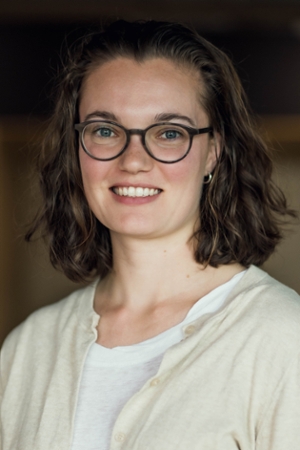PhD Doctoral Defense
Applications of Partial Wavefield Coherence Theory to Spatial Audio and Room Acoustics
Erin Driscoll
Supervised by Mark Bocko and Sarah Smith
Monday, November 27, 2023
11 a.m.–Noon
703 Computer Studies Building
 This thesis investigates the application of wavefield coherence theory to problems in auditory acoustics, focusing on two key applications. The first application involves inferring the acoustic properties of a space based on the coherence properties of music and speech recorded within it. The second application relates to predicting auditory scenes in multichannel sound reproduction systems.
This thesis investigates the application of wavefield coherence theory to problems in auditory acoustics, focusing on two key applications. The first application involves inferring the acoustic properties of a space based on the coherence properties of music and speech recorded within it. The second application relates to predicting auditory scenes in multichannel sound reproduction systems.
In the initial part of the research, the analysis investigates the impact of various acoustic spaces on periodic sounds, particularly quasi-periodic signals with harmonic overtones, common in musical instruments and the human vocal tract. Leveraging wavefield coherence theory, this work seeks to extract acoustic information about a space, such as its impulse response or reverberation time, without any prior knowledge of the space. This approach introduces a promising method for the blind estimation of room impulse responses.
In the latter part of the thesis, wavefield coherence theory is applied to develop a quantitative model of human binaural auditory perception. The primary focus is on the localization and spatial extent of sound sources in multichannel sound reproduction systems, commonly found in various settings, such as home entertainment, teleconferencing rooms, and theaters. This research aims to provide engineering tools for assessing and predicting system performance in realistic listening conditions, as well as forecasting the auditory percepts reported by human listeners in these spaces.
The thesis proposes a model that connects signal coherence properties to listener perceptions, addressing challenges associated with signal duration, frequency content, and room reflections. This model extends beyond existing psychoacoustic models, enabling a wider scope of predictions.
Overall, this work explores the applications of wavefield coherence theory in acoustics, offering novel solutions to longstanding problems. It presents a fresh perspective on blind impulse response estimation and advances the understanding of binaural auditory perception in multichannel sound environments. The research provides valuable insights for acoustic space characterization and the design of immersive auditory experiences.
